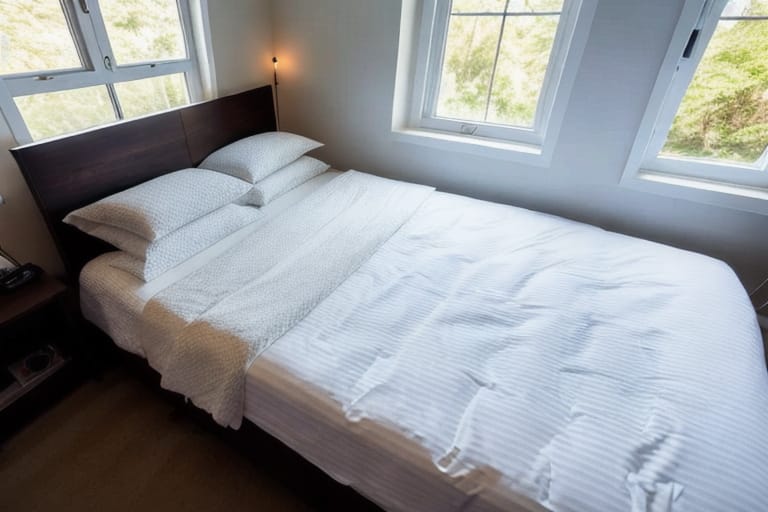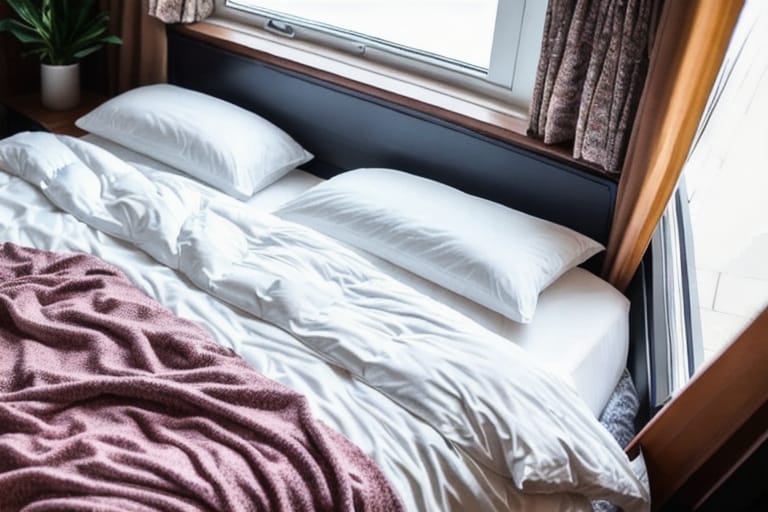Down comforters have a reputation for being exceptionally warm and cozy. But do you know why they provide such incredible insulation compared to other types of bedding? In this comprehensive beginner’s guide, we’ll lift the duvet and dive into the science behind what makes down comforters such maestros at trapping body heat.
Down Cluster Anatomy and Design
Down comes from waterfowl like ducks and geese. But it’s not just random feathers stuffed into a duvet. Down clusters are intricate, three-dimensional structures of fluffy filaments that interlock to form a breathable mesh that expertly traps air.
The tiny filaments branch out from a central quill point. Each mature cluster contains around 20 to 30 filaments. When you can zoom in and see those delicate branches interconnecting, you know you have a high-quality down with excellent fill power.
More on how fill power specifically contributes to coziness soon!
Unlike regular feathers which have a central quill that stops airflow, down clusters have increased surface area to catch air. The natural crimp of the delicate filaments also helps them loft up and avoid compacting to create great insulation.
The Magic Fill Power Formula
So what exactly is fill power? Essentially, it measures the loft and fluffiness of the down clusters. Manufacturers determine fill power using a standard test that measures the cubic inches one ounce of down can fill up.
- For example, an ounce of 600 fill power down can loft up to fill 600 cubic inches of space.
The higher the number, the better the down clusters can trap air and heat.
As you’re looking for a warm-down comforter, pay attention to the fill power rating:
- Ultra-light (400 to 500 fill power): Great for warmer climates or hot sleepers
- Lightweight (500 to 600 fill power): Provides warmth across most temperatures
- Mid-weight (600 to 700 fill power): Ideal for retaining heat in cooler weather
- Heavyweight (700+ fill power): Specialized extra-cozy down for frigid environments
You’ll also see a fill weight number, which simply refers to the total ounces of down inside the comforter. Combine fill power and fill weight for maximum insulation!

Down Cluster Care and Maintenance
With the right care, a quality down comforter can last over 10 years!
Over time, natural oils from your body can build up on down clusters causing them to collapse. Follow these tips:
✅ Use a duvet cover to protect from body oils and dirt ✅ Dry clean once a year to revive loft and fluffiness
✅ Air out the down by fluffing the comforter frequently
Alternatives for Sensitive Sleepers
For those with allergies, down might cause some sniffles. Not to worry, hypoallergenic alternatives like down-alternative polyester can still provide warmth without irritation.
While the insulation isn’t quite as mighty as natural goose or duck down, synthetic fills continue improving. Without pesky allergens getting in the way of shuteye, options like Primaloft and microfiber can be magic for allergy-prone nesters.
Achieve Adequate ZZZs with an Awesome Down Comforter
Who would’ve thought that tiny clusters of feathers could create such a heavenly cocoon of coziness? By understanding fill power, fill weight, and proper care, you can select a down comforter to keep you nice and toasty without sweating through your PJs.
We hope this beginner’s guide has helped lift the duvet on the secrets behind why down comforters excel at retaining body heat.

Frequently Asked Questions
What is the best fill power for a down comforter?
The best fill power depends on your climate and how warm you want your comforter. If you live somewhere cold or tend to sleep cold, choose a higher fill power around 700+ for ultra warmth. In more temperate climates, a mid fill power around 600 provides a comfortable balance.
How does fill weight compare to fill power for down comforters?
Fill power measures the loft and fluffiness, while fill weight refers to the total ounces of down inside the comforter. Make sure to check both, as a higher fill weight means more down and insulation. Combine a high fill power and high fill weight for maximum coziness potential!
How do I wash my down comforter correctly?
We recommend using a professional dry cleaner for washing down comforters to properly revive the delicate down clusters and avoid damage. Dry clean the comforter once a year to clear away oils and dirt that can cause it to lose lofting power. Avoid regular machine washing.
Why choose goose down vs. duck down?
Goose down clusters tend to be larger with increased fill power compared to duck. The structure of goose down allows for more trapped air and better insulation. However, responsibly-sourced duck down can be an ethical option. Evaluate fill power and your budget to decide which suits your needs.
Is a down-alternative comforter actually as warm as real down?
The warmth of down-alternative bedding has improved with technology like Primaloft. However, the insulation and durability still can’t quite match the thermal excellence of natural goose or duck down clusters. If you have allergies though, high-quality synthetics make suitable substitutes without the irritation.
What’s the ideal bedroom temperature for sleeping with my cozy down comforter?
To fully enjoy that fluffy new down comforter, set your thermostat around 60-67° F (15- 20° C). This creates the perfect cool environment so your body heat warms up the insulating comforter. Any warmer, and you might get too hot under all that splendid goose down.








